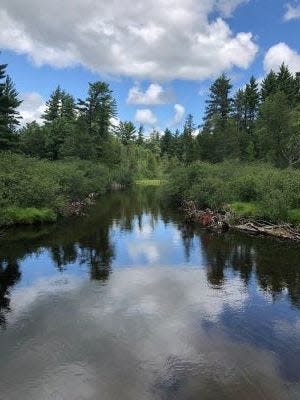DNR to decide on next phase of proposed Camp Grayling expansion
GAYLORD — The proposal to expand the Camp Grayling Joint Maneuver Training Center is still under consideration by the Michigan Department of Natural Resources
The Michigan National Guard has proposed leasing nearly 162,000 acres of adjacent state forest land in Crawford, Kalkaska and Otsego counties to conduct training exercises that use sophisticated communications systems.
More:Public hearing set to look at proposed Camp Grayling expansion
"We are waiting on the director of (the) DNR to announce whether we are moving ahead with the next step which, if approved, would be specific land analysis in the perspective areas. Analysis would include types of training which would be environmentally compatible to those specific lands (or) areas," said U.S. Army Colonel Scott Meyers, the Camp Grayling commander.
Meyers said the guard is still seeking to access 35,299 acres in Crawford County, 49,629 acres in Kalkaska County and 18,833 acres in Otsego County. Under the proposed expansion, new areas would extend east to West Twin Lake near Lewiston; north into a rural area southeast of the Antrim County village of Mancelona; west along the Manistee River; and south to near the western shore of Houghton Lake.
"There currently has been no change to the land access proposal since public engagement on the issue began in early summer. However, if approved, the acreage will shrink based on boundaries along waterways as well as other DNR considerations," Meyers said.
More: SubscribeCheck out our offers and read the local news that matters to you
This proposal would more than double Camp Grayling’s current footprint and the military said it would adhere to a 1,500-foot buffer around rivers and lakes.
The proposed camp expansion is to upgrade capabilities in cyber and electronic warfare, such as the jamming of GPS signals, or the tracking — or prevention of tracking — of troops using their cellular or other electronic signals. The expansion areas would include no fencing, no permanent buildings or structures; and be used by only small-wheeled vehicular traffic, using only existing roads and trails, Meyers said.
If the expansion is approved, the public would still have access to those lands for fishing, hunting and other recreational activities, said Meyers.
"All areas and roads within the new training areas would always be open to the public, no change to current uses for the public," he added.

More:My Take: Expand Camp Grayling to help support our military
More:My Take: Don't question our patriotism just because we don't want weapons testing on public land
The Sierra Club is opposed to the expansion and has questioned whether it is really needed now.
"If additional training space for our men and women in uniform wasn’t needed at this time, we would not ask for it," Meyers said in response. "The technology and complexity of modern warfare and the requirements of our National Security Strategy are not the same as they were even just a few years ago. Training with basic maneuver and fire tactics is no longer enough to keep our men and women prepared to succeed if ever called upon to fight against an adversary. The military has an obligation to stay ahead of those rapid technological advancements. That is the sole motive behind this request for additional land access."
Adolph Greenberg, president of the Au Sable River Property Owners Association, said the sheer size of the expansion of military operations on public lands would pose a danger to the Au Sable and Manistee river ecosystems.
"The proposed expansion is staggering as it would add 250 square miles to the existing 230 square miles Camp Grayling now encompasses. The military argues that this would improve training for electromagnetic warfare — that it has already been engaged in for years. We are not convinced that additional land is needed, especially in Crawford County. In addition, the proposed buffer of 1,500 feet from the rivers is purely arbitrary and not driven by scientifically-based analysis. It is also important to note here that we now are dealing with the contamination of ground and surface water from PFAs emanating from Camp Grayling," said Greenberg in an email.
Are there any factors that the military could agree to that would encourage Greenberg's organization to end its opposition? "None," he replied.
In July, commissioners in Kalkaska County voted unanimously to oppose the expansion. Some local and statewide environmental and conservation groups, including the Michigan United Conservation Clubs and the Anglers of the Au Sable, are also not in favor of the proposal.
At its current size of 148,000 acres, Camp Grayling is the largest National Guard training facility in the U.S. It is regularly used for training year-round by thousands of troops from the Michigan National Guard, National Guard units from other states and visiting units from Canada and other allies.
Created in 1913 through a land grant by Michigan lumber baron Rasmus Hanson, Camp Grayling has grown over the years through National Guard property acquisitions and, for most of its footprint, leases of state land whose uses the DNR continues to regulate.
— Contact reporter Paul Welitzkin at pwelitzkin@gaylordheraldtimes.com.
This article originally appeared on The Petoskey News-Review: DNR to decide on next phase of proposed Camp Grayling expansion
